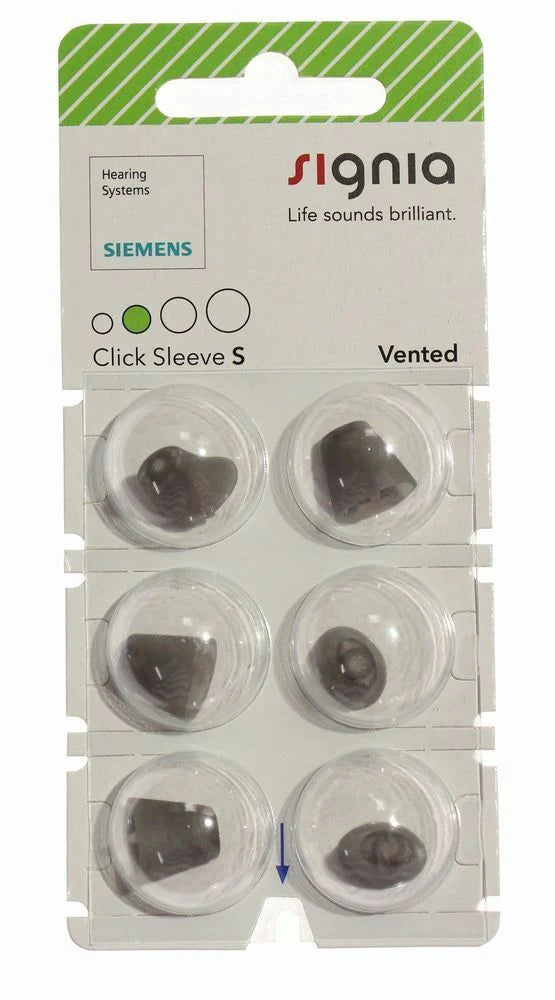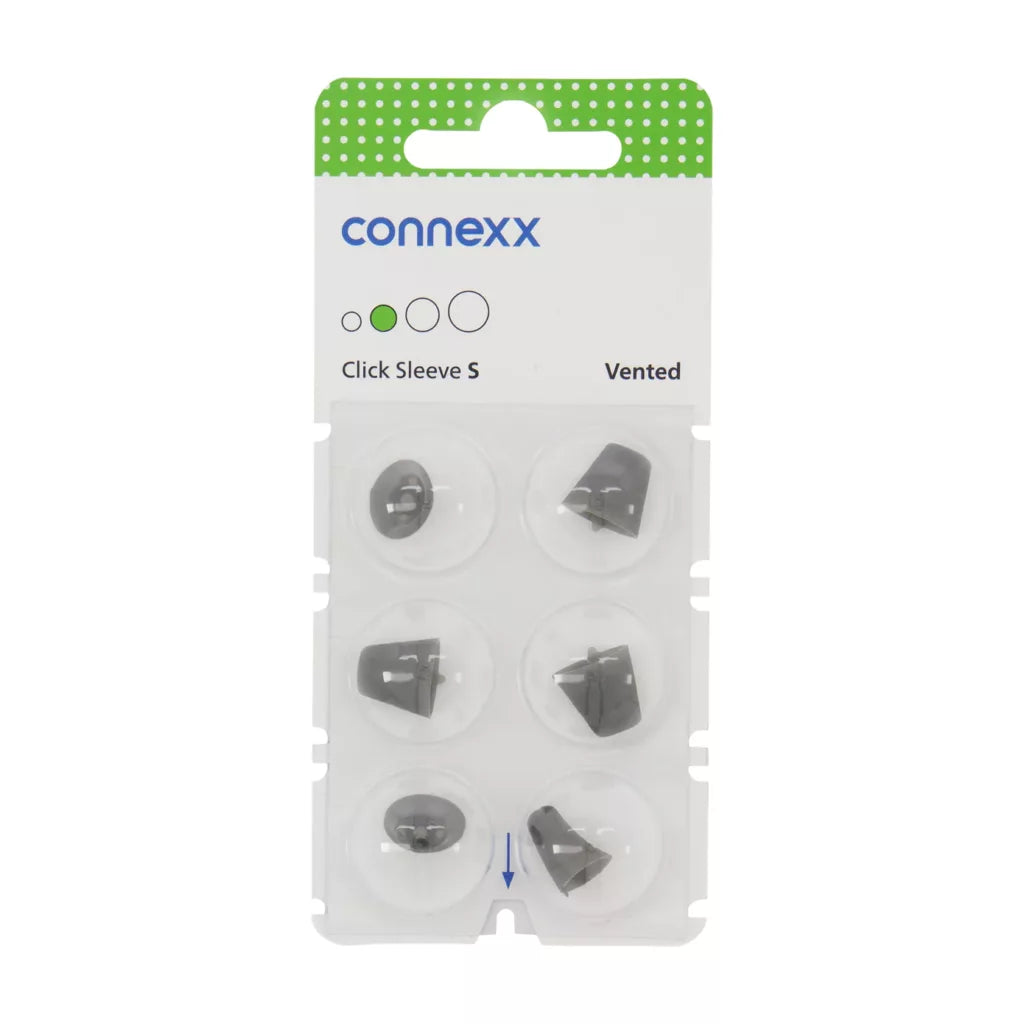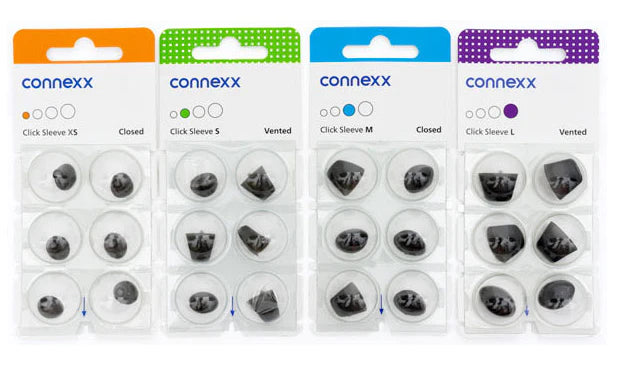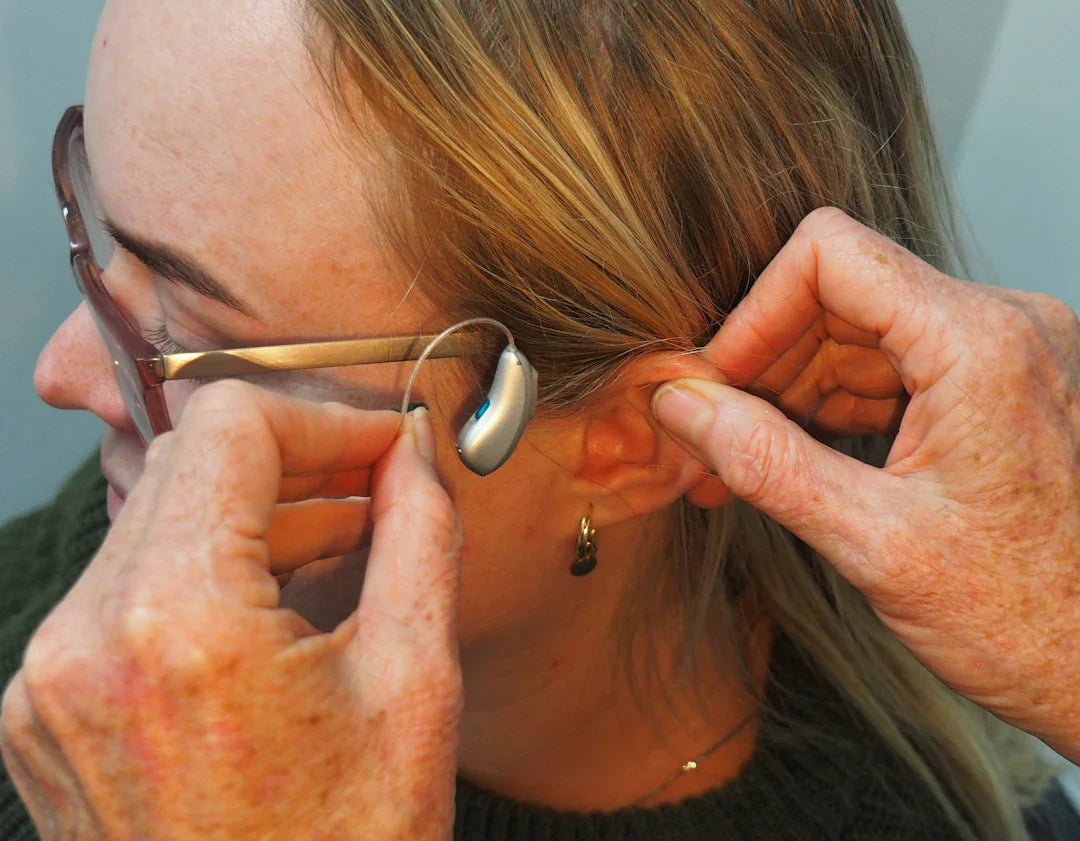


Signia
Signia Connexx Hearing Aid Click Sleeves
Details & Features
Signia Connexx click sleeves are used to couple Signia hearings aids with the ear canal. They are small flexible silicone coverings that attach to the end of your hearing aid receiver (speaker unit). They are compatible with select: Signia, Siemens and Rexton hearing aids. Correct Size and Style is vital in optimal hearing aid performance.
Description
Signia Connexx click sleeves are used to connect Signia hearings aids with the ear canal. They are small flexible silicone coverings that attach to the end of your hearing aid receiver (speaker unit).
Compatibility
These domes are compatible with a wide range of hearing aids that use Signia MiniReceiver 2.0 and Signia Silk Hearing aids, including:
Signia Xperience, NX and Primax series
Audio service: G6, G5 and G4 series
Specsavers Advance: 19 series, 18 series, 17 series and 16 series
*Please note that you will receive either Signia or Connexx branded sleeves in the type ordered, these products are identical and manufactured by the same company - We endeavour to send you the stock that is available for fastest dispatch*
Sizes & Styles:
Signia Click Sleeves come in four sizes: Large, Medium, Small and Extra Small. They can be either Vented or Closed in all these sizes.
Correct Style & Size of Click Sleeve is Vital
The Correct selection of the appropriate Style and Size of the Click Sleeve is vital consideration when optimising hearing aid performance as they directly affect:
- The required amplification to your hearing levels.
- Sound Quality & Acoustic Comfort
- Security of the hearing aid in and on your ears.
- Physical Comfort of the hearing aids.
- Ability to manage including correct insertion/removal, cleaning and maintenance.
Your hearing care professional should guide the selection of the right acoustic coupling depending on your hearing levels across the frequency range and your ear canal size and shape.
The importance of the correct size and style of click sleeve (the acoustic coupling of the hearing aids to your ears) is often under stated or underestimated. So please be careful when selecting the style and sizes of your click sleeves and try to adhere to the recommendation of your Audiologist or hearing care professional.
The Effect of Using Vented Vs Closed Click Sleeves (Non-Vented)
Signia Vented Click Sleeves reduce the level of amplification that can be obtain of low to mid frequency sound. This is because these longer wavelengths spill out of the ear canal through the vents/air channels and so limits the amount of low frequency amplification that can be obtained. This is desirable if people require the beneficial amplification mainly toward the higher frequency ranges and have fairly good hearing sensitivity toward the lower to mid frequency ranges. Vents also reduce the blocked sensation in the ears that can also boost the volume of the wearers own voice and internal sounds. We refer to this as the occlusion effect (OE).
Signia Closed Click Sleeves are suitable for people who have significant levels of hearing loss toward the low to mid-frequency ranges. The more sealed nature of the coupling to the ear canal enables adequate low to mid frequency amplification to be developed or sound pressure level (SPL) of these lower frequency sounds. Noticeable on the Signia closed domes is still a very small vent hole, so the ear is still able to aerate and reduce the blocked sensation to some extent. Occlusion effect isn’t as bothersome for people who require the amplification in the low to mid-frequency ranges.
Security & Maintenance
FAQs
Shipping & Returns
United Kingdom: 2-4 working days
We have a 30-day returns policy. If you wish to return your order, contact us and we'll be happy to help.
Stay up-to-date
Blog Posts

Building Support Networks for Hearing Loss

The Future of Hearing Aids: Trends to Watch

